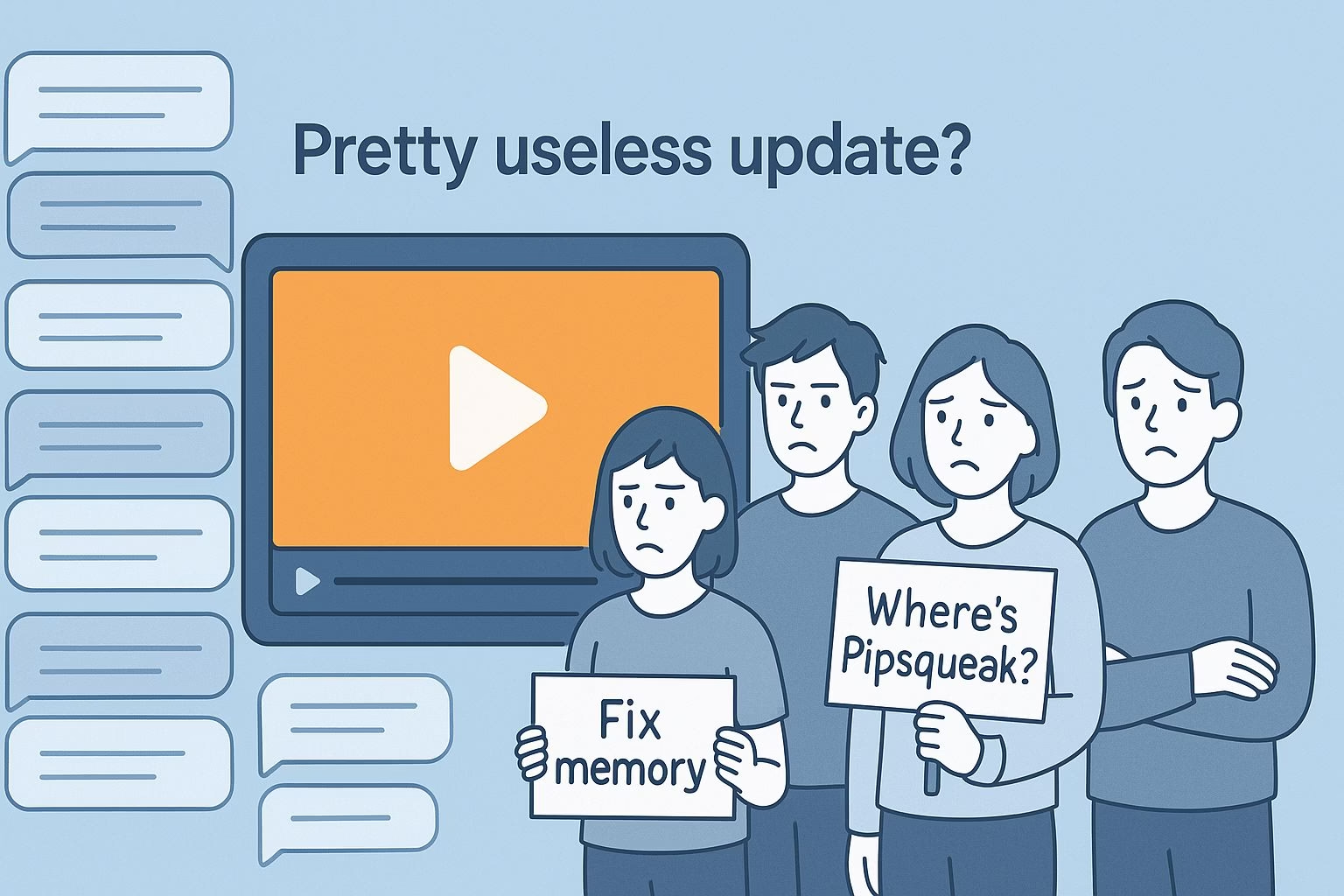Character AI Update Character Intro Videos
Summary
- Users see the new Character AI video intro update as unnecessary and unwanted.
- The community is frustrated by poor memory, bad search, and delayed rollout of Pipsqueak.
- Requests remain clear: better roleplay quality, tagging systems, and consistent AI behavior.
- Chasing surface-level features risks losing trust and driving users to alternatives.
When Character AI rolled out its new “Character Intro Videos” feature, the community reaction was far from enthusiastic.
The update lets creators generate quick greeting videos for their characters, but many users feel it misses the mark on what they actually want.
From the looks of it, this update focuses on presentation rather than fixing long-standing issues like search accuracy, memory, or the long-promised Pipsqueak model.
People are frustrated that resources keep going into flashy extras while the core chat quality remains the same.
Browsing through community feedback, the overall tone is clear: many see this as a “pretty useless update” that few will use.
Users are asking why their recommended bots can’t be filtered properly, why memory is still so poor, and why essential tools like tagging systems or better roleplay support aren’t being prioritized.
Instead, they’re being offered video intros nobody asked for.
At the end of the day, most of us came to Character AI for one thing: engaging roleplay and authentic conversations. Updates that don’t improve that experience feel like distractions.
If Character AI wants to keep its community loyal, listening to these concerns should come first.
Why users feel ignored by Character AI
One of the biggest frustrations voiced in the community is the feeling of being ignored.
Users have asked for years about better memory, consistent roleplay quality, and features like tagging systems to filter bots.
Instead of those fixes, they see flashy rollouts such as intro videos, community feeds, and stickers.
Many point out that even the “Not Interested” button on recommended bots doesn’t work. You can try to clear out your feed, but the same unwanted bots keep showing up.
Others note that search results return irrelevant characters with little connection to what they typed. For a platform built on conversation, these basic issues stand out more than any extra media features.
The other pain point is Pipsqueak. The model has been teased for months, but only a fraction of users have access to it. Some had it and then lost it.
Promises without delivery create a sense of distrust, especially when resources seem to be funneled into features no one requested.
It feels like the company is building a social media app around the product rather than making the chat itself better.
What users actually want from updates
When you sift through the complaints, the requests are consistent and reasonable.
Users want memory improvements so bots can remember details for more than a few paragraphs.
They want characters to stay in role instead of shifting personalities mid-conversation. They want more control over search, recommendations, and tagging so they can actually find the bots they enjoy.
Another strong demand is for full rollout of the Pipsqueak model. Many see it as a major step toward fixing quality and tone issues.
Instead, they watch as new features like video intros or feeds take the spotlight, leaving core AI development in the background.
The recurring theme is that people didn’t join Character AI for gimmicks.
They came for immersive roleplay. A simple update that improved context handling, stopped bots from repeating themselves, or fixed the tendency to default into clichés would go further than any sticker pack or video feature.
The risks of chasing the wrong priorities
When a platform focuses on surface-level features instead of the core product, the risks stack up quickly.
For Character AI, this means frustrating its most loyal users while failing to attract new ones.
-
Loss of trust: Announcing models like Pipsqueak and then delaying or limiting access erodes credibility. Users begin to question whether promises will ever be delivered.
-
User churn: Roleplayers who don’t see improvements in memory or consistency eventually move on to competitors. A shiny intro video won’t keep them around.
-
Misaligned vision: Trying to reshape the app into a social feed distracts from what it does best. If the chat experience continues to degrade, the whole community suffers.
What makes this risk sharper is the emotional investment people place in their chats.
When bots forget conversations or repeat clichés, it feels like the platform isn’t respecting that investment.
Updates that don’t fix those frustrations only deepen the divide.
Where alternatives are filling the gap
Frustrated users aren’t short of options. Platforms like Candy AI and Nectar AI are already positioning themselves as more responsive to what role players want.
These tools prioritize memory, context, and immersive chat over add-ons that nobody asked for.
-
Candy AI leans into uncensored, natural-feeling roleplay that avoids the repetitive pitfalls seen on Character AI.
-
Nectar AI focuses on smoother conversations with better recall, making it easier for users to keep longer, more immersive sessions alive.
Neither of these alternatives spends time building sticker packs or community feeds. They focus on fixing the very problems that Character AI’s user base complains about daily.
That makes them appealing not because they’re flashy, but because they stay aligned with what roleplayers value most.


